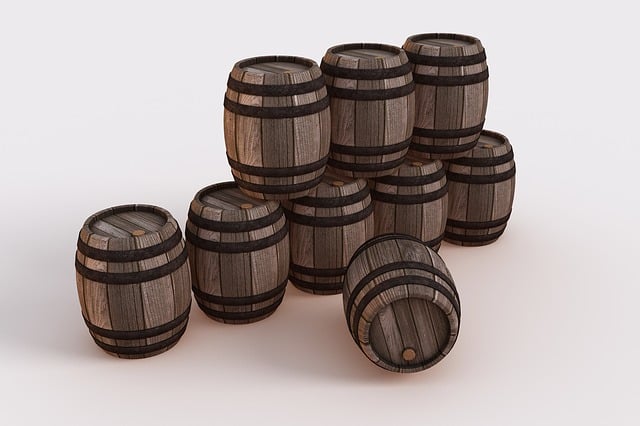In this article, you will learn about the capacity of a standard wine fridge and how many bottles it can hold. Whether you’re a wine connoisseur or just someone who enjoys the occasional glass of wine, it’s important to have the right storage for your collection.
A standard wine fridge typically has a capacity of around 20 to 50 bottles, depending on the size and design. This is ideal for most wine enthusiasts who have a small to moderate collection. However, it’s important to consider the size and shape of the bottles you have, as larger or non-standard bottles may take up more space.
Factors that determine the capacity of a standard wine fridge
When it comes to choosing a wine fridge, one of the most important factors to consider is its capacity. The capacity of a wine fridge refers to the number of wine bottles it can hold. Understanding the factors that determine the capacity of a standard wine fridge can help you make an informed decision and ensure that you can store all your favorite wines in optimal conditions.
Size of the wine fridge
The first factor that determines the capacity of a standard wine fridge is its size. The physical dimensions of the wine fridge will dictate how many bottles it can accommodate. Generally, wine fridges come in various sizes, ranging from small countertop models to larger freestanding or built-in units.
The internal storage capacity of a wine fridge also plays a crucial role in determining its overall capacity. Some wine fridges have adjustable shelves or compartments that can be customized to fit different bottle sizes and maximize storage space.
Type of shelves
Another factor that determines the capacity of a wine fridge is the type of shelves it has. Different types of shelves offer different storage options, allowing you to organize your wine collection in the most efficient way possible.
Fixed racks are a common feature in many wine fridges. These racks typically have predetermined spaces that can hold standard-sized wine bottles. However, they may not be suitable for larger bottle sizes.
Sliding shelves provide more flexibility as they can be extended or retracted to accommodate different bottle sizes. This feature allows you to easily access bottles stored at the back of the fridge without having to remove other bottles in the front.
Removable shelves offer even more versatility. These shelves can be taken out entirely, creating more room for larger bottles or other items that may require refrigeration.
Spacing between shelves
The spacing between shelves in a wine fridge can also impact its capacity. Some wine fridges offer adjustable spacing, allowing you to customize the distance between shelves to fit bottles of varying heights.
Uniform spacing between shelves is another option found in certain wine fridges. While this may limit the storage capacity for larger bottle sizes, it can still provide an efficient solution for standard wine bottles.
Bottle height considerations are essential when determining the storage capacity of a wine fridge. Taller bottles, such as Champagne or sparkling wine bottles, may require additional space between shelves to ensure they fit properly.
Wine bottle sizes and their impact on capacity
Understanding the different wine bottle sizes and their impact on capacity is crucial when determining how many bottles a standard wine fridge can hold.
A standard wine bottle size typically holds around 750 milliliters of wine. This size is the most common and will generally fit well in most wine fridges.
Magnum bottle size, on the other hand, holds approximately 1.5 liters of wine. These larger bottles may require more space and can limit the overall capacity of a wine fridge.
Champagne bottle size is often wider and taller than standard wine bottles. If you enjoy storing Champagne or sparkling wines, it is important to consider the height and diameter of these bottles when selecting a wine fridge to ensure they can be accommodated without compromising the capacity.

Optimizing storage capacity in a standard wine fridge
While the capacity of a standard wine fridge is predetermined by its physical features, there are ways to optimize storage space and fit more bottles.
Organizing bottles efficiently is key to maximizing the capacity of a wine fridge. Grouping similar-sized bottles together and arranging them in a logical order can help you make the most of the available space.
Utilizing vertical space is also important. Wine fridges often have multiple shelves, so stack bottles vertically when possible. However, be cautious not to stack bottles too high, as this can make it challenging to access the bottles at the bottom without disturbing the others.
Stacking options, such as stacking wine racks or stacking cubes, can also help increase the storage capacity of a wine fridge. These stackable options allow you to add additional layers of storage without compromising the stability or accessibility of the bottles.
Maintenance tips for maximizing wine bottle capacity
Proper maintenance of your wine fridge is essential to ensure its optimal performance and maximize its bottle capacity.
Proper temperature control is crucial. Wine fridges should be set at an appropriate temperature range to keep your wines in the best condition. Fluctuating temperatures can potentially affect the capacity by causing bottles to expand or contract.
Minimizing door opening can also help maintain the temperature stability inside the wine fridge. Opening the door frequently can cause temperature fluctuations and disrupt the overall storage conditions.
Regular cleaning is important to prevent any mold or potential odors that can compromise the capacity of the wine fridge. Cleaning the shelves, racks, and interior surfaces of the fridge can prevent any buildup that may restrict the available space.

Conclusion
Choosing a wine fridge that meets your storage needs and preferences requires considering the factors that determine its capacity. The size of the wine fridge, type of shelves, spacing between shelves, and bottle sizes all play a role in determining how many bottles a standard wine fridge can hold.
By understanding these factors and following some storage optimization and maintenance tips, you can make the most of your wine fridge’s capacity. Organizing bottles efficiently, utilizing vertical space, and ensuring proper maintenance will help you store and enjoy your favorite wines at their best.
So, next time you’re in the market for a wine fridge, keep these factors in mind and make an informed decision to ensure you have enough space to store all your favorite bottles. Cheers to a well-stocked wine fridge and delightful wine experiences!
